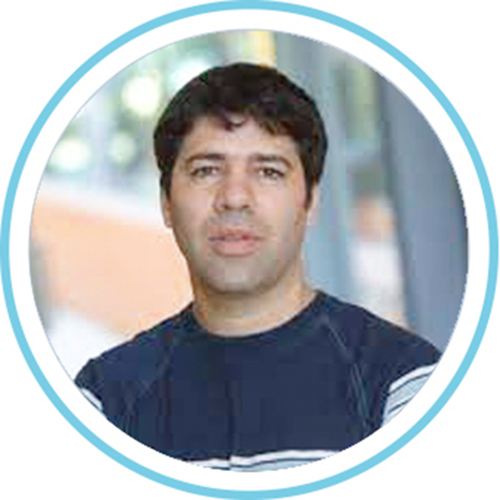Introducing Prof. Hillel Kugler

Prof. Kugler specializes in formal verification and graphical languages for computational and biological systems. He applies software verification methods on biological cells and biological computers, and runs experiments that will enable deeper scientific understanding and prediction of system behavior.
AI applications such as ChatGPT or Midjourney, which demonstrate remarkable ability in performing tasks only recently thought to be the preserve of humans, represent technological progress that entrenches the human-machines symbiosis. Many fear this symbiosis and dread the day when computers make workers redundant, replace partners in relationships, or simply take over. The reality is more complex: In fact, computers help us better understand ourselves. "The human cell can be seen as a sort of software: it has a control program that can be described as a programming model. And once you set it up as such, you can adapt verification methods of software systems to the cell, while trying to understand it better, and examine how well the model we built matches the experimental measurements made in the lab," explains Prof. Hillel Kugler. "On a scientific level, this helps understand the cell's program and predict what can happen to cells under different conditions. In the future, this work can be applied in administering medication, for example: taking tissue samples from a particular person and seeing how their reaction to a certain drug, or working with stem cells to create specific cells. Computational tools can also help with the artificial cultivation of biological tissues, by creating databases of blood units, for example.”
Prof. Hillel Kugler, a married father of three daughters, specializes in formal verification methods and graphical languages for biological systems. He completed his first degree in computer science and physics at the Hebrew University. "I was interested in science and theory, as well as in the software side, algorithms, and the development of systems," he says. Kugler then worked at ILogix, a company developing tools for complex software systems, and completed a second degree and a doctorate at the Weizmann Institute, specializing in graphical languages for software and formal verification. "Every software system, algorithm, or even a hardware chip undergoes a lot of testing to ensure there are no errors, but there can always be a bug or some unexpected behavior. Formal verification performs the tests in a mathematical manner, and after we complete this process, we can say with certainty that according to the behavior we have set up, the behavior is correct. This provides a verification that is airtight, similar to proving a mathematical theorem.
As part of his post-doctorate at NYU, Kugler ventured into formal verification and graphical languages for biological systems. "While during my doctoral studies I was more focused on software systems, in my postdoc, I integrated them with biological applications. Naturally, computational tools come hand in hand with biological experiments, and the work is always done in collaboration with biologists," he clarifies. "Later on, I spent eight years working in research laboratories at Microsoft, in England. My research group worked on biological applications, but during my work I saw how a large software company worked and was exposed to very interesting applications, constructing large systems, developing products and new technologies, like artificial intelligence, back then on the verge of the dramatic leap we are witnessing today."
Prof. Kugler returned to Israel in 2015, straight to the Faculty of Engineering’s Computer Engineering program. "I have an interest in a wide range of topics, and here at the faculty, there is a wide range of fields that interest me: There’s what the guys in Bioengineering are doing or the teams in electrical engineering and chip development, and I have seen great potential for research collaborations. Software is something you can use to build systems and applications that can affect a wide range of research areas. The methods are neutral, and can be applied to a variety of applications and computer programs. For example, building a system that simulates what happens in a biological cell, a system that controls planes, or a system that builds support for a social network. I really enjoy what I do. I have the independence and freedom to decide what I want to do, working with researchers and advanced degree students, and it's fun."
In recent months, Prof. Kugler has been working on developing the software engineering program for first degree students, available in the coming academic year, 23/24. "The program has been in planning and development, undergoing the process of approval in recent years. Prof. Amnon Meisels and Prof. Dror Ravitz have invested a lot of time and effort in constructing and approving it, and I, too, have recently partaken in the efforts that led to its approval," he says. "This program was built in collaboration with the Department of Computer Science, and their faculty will teach courses. It is a four-year program, so it allows for sturdy foundation and expansion to form, in comparison with computer science, including significant classes in mathematics and engineering, including hardware basics. Moreover, the program offers many additional software-specific courses, such as code writing and project characterization, with a lot of practical work. Today's technologies are changing rapidly, and the broader the foundation that students receive in terms of the in-depth knowledge, the more they’ll be in position to adapt to changes in the work market and make a difference."
Click here to read more about the software engineering program
Last Updated Date : 24/08/2023



